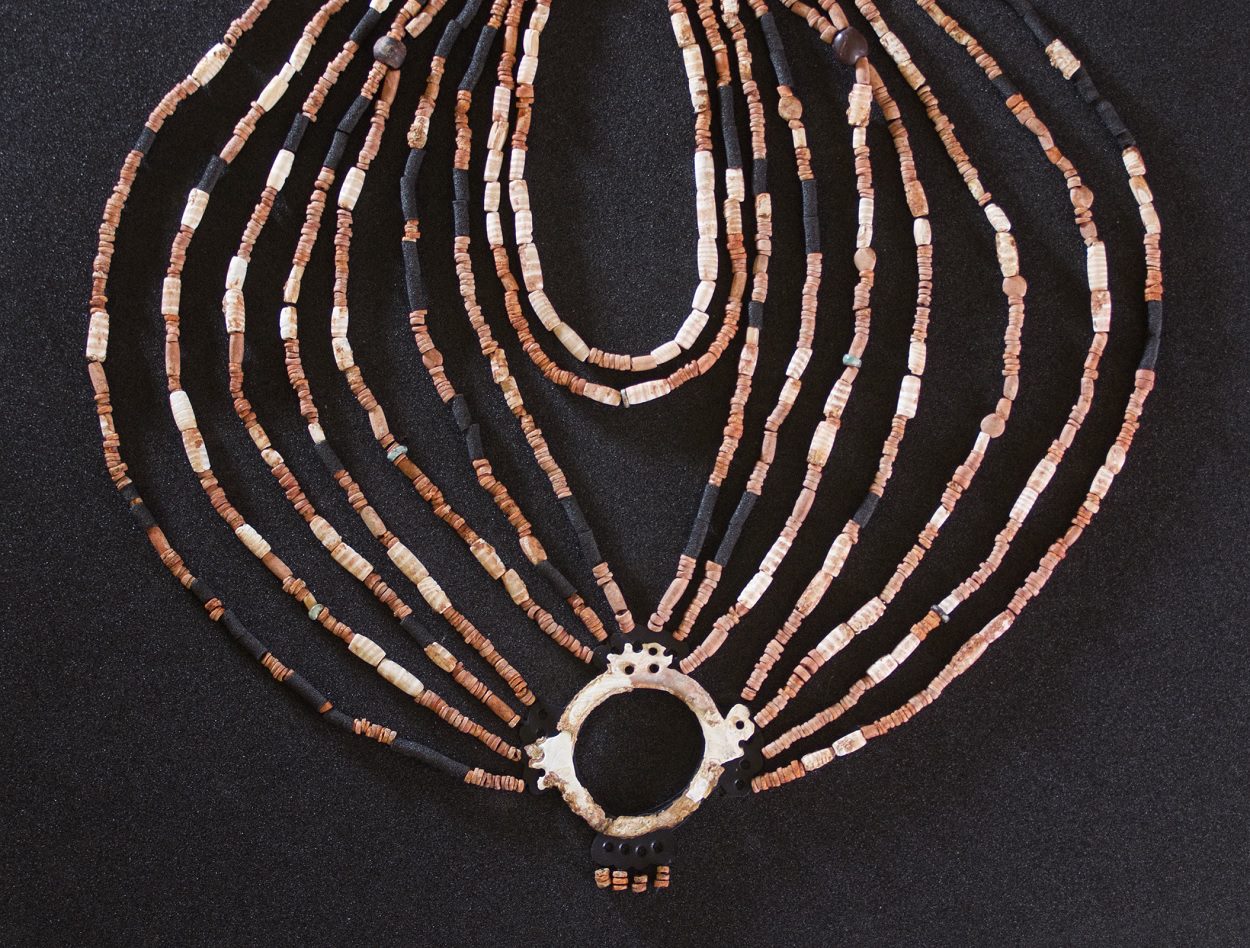According to a study published in the open-access journal PLOS ONE, an ornate necklace discovered in a child’s grave at the ancient village of Ba’ja offers fresh insights into the social complexity of Neolithic culture.
Ba’ja is one of the largest neolithic villages in the Jordan area, covering an area of 3.7 acres with a population of up to 600 inhabitants. Like the nearby site of Basta, the settlement was built in 7000 BC during the PPNB (Pre-Pottery Neolithic B) period. People of this era relied more extensively on domesticated animals to complement their previously mixed agrarian and hunter-gatherer diet.
Body adornments hold significant symbolic meaning, conveying cultural values and individual identities, making them immensely valuable in the examination of ancient societies.
In the study, archaeologists analysed materials that adorned the body of an eight-year-old child found in a burial at Ba’ja that contained over 2,500 colourful stones and shells, two exceptional amber beads, a large stone pendant, and a delicately engraved mother-of-pearl ring.
Through an analysis of the composition, craftsmanship, and spatial arrangement of these artifacts, the researchers deduced that they once constituted a unified multi-row necklace that has disintegrated over time. As a part of this investigation, the scholars crafted a physical reconstruction of the original necklace, currently exhibited at the Petra Museum in Southern Jordan.
The multi-row necklace, being one of the oldest and most remarkable Neolithic ornaments, offers fresh perspectives on the funerary customs of individuals who seemingly held elevated social status during the Neolithic period.
By reconstructing the necklace, the researchers suggest that the inhabitants of Ba’ja had meticulous craftsmanship and were able to procure exotic materials from distant regions. The investigation of this artefact also reveals intricate social dynamics among the community members involving skilled artisans, traders, and high-status individuals responsible for commissioning such prestigious pieces.
According to the researchers: “The analysis of the child’s necklace has yielded valuable information that enhances our understanding of the ritual practices and symbolic behaviour of the community of Ba`ja while shedding light on the artisanal and economic capabilities employed to serve these expressions. Despite its elaborate design, such a necklace was not created for exchange or trade purposes but was rather a part of the child’s burial, serving as a significant testament to the cultural practices of the time.”
https://doi.org/10.1371/journal.pone.0288075
Header Image Credit : Alarashi et al – PLOS ONE, CC-BY 4.0







